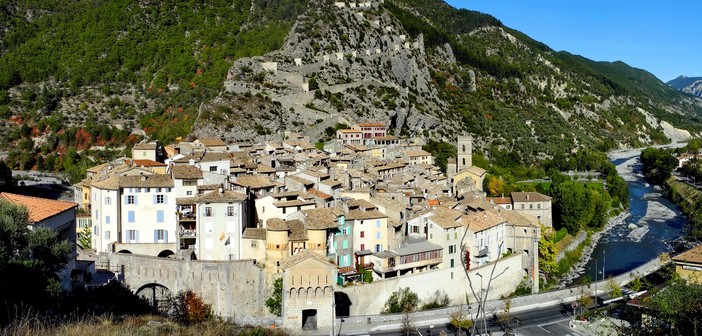This fortified city, the former episcopal seat ‘Glandèves’, offers visitors a journey back in time; almost nothing has changed since the 16th century. The medieval houses still stand side by side, clinging to the hillside and overlooked by the citadel, whose access, even today, is an adventure in itself.
The village is located on a bend of the Var, which is why it gained significant strategic importance. The border until 1860 was further downstream on the river, with Puget-Théniers belonging to the Savoy. Before 1873, the only access from Nice to Entrevaux was through the Esteron valley. The Mescla was then impassable.
The States of Savoy did not wish to facilitate movement on this route leading to Nice. The Esteron valley, under the possession of the Kingdom of Piedmont-Sardinia, was the only drivable route, easy to control, leading to Puget-Théniers. Entrevaux was therefore a bridgehead of the Kingdom of France, and after 1690, Vauban improved its defenses.
The fortified town served as a passage to the north, with Annot and Guillaume being French villages until the first Treaty of Turin in 1760. The defenses of Entrevaux were improved until the mid-18th century. Two batteries were added on the path leading to the castle.
This access is imposing with its parapet, snake or wall climbing the rocky mound. The visit to the citadel is both a history and military architecture lesson. The houses, the guardhouse, the prison, the old shops, and the narrow alleys all invite you to return to the roots of our culture and history. The 17th-century cathedral was built between 1604 and 1667.
It is in Provençal Gothic style with a Baroque choir where Saint Louis is represented. However, it is not dedicated to this king but to Our Lady of the Assumption. Through the ancient streets of this village, visitors will discover the palaces of the commander of the place, the lords of Glandèves, the bishop, and the canons.
A 15th-century door bears witness to the first line of defense before the walls were erected two centuries later. We will notice the medieval stalls whose configuration (two display stands and a door in the middle of the shop) remains the same today despite transformations.
Before the revolution, cities had their common facilities: mills, ovens, their hospice where travelers who could not afford the inn were received, the guardhouses and powder magazines, both barrack and arsenal, finally their prison. You will discover them through alleys and small squares; Entrevaux is worth getting lost in.
For those who wish to evoke the muse and poetry, go beyond the cathedral, cross the Italy gate, and plunge into a garden and terraced crops, the Var, the olive trees, and the silence. Paradise is not far; it is at your feet.
Thierry Jan


